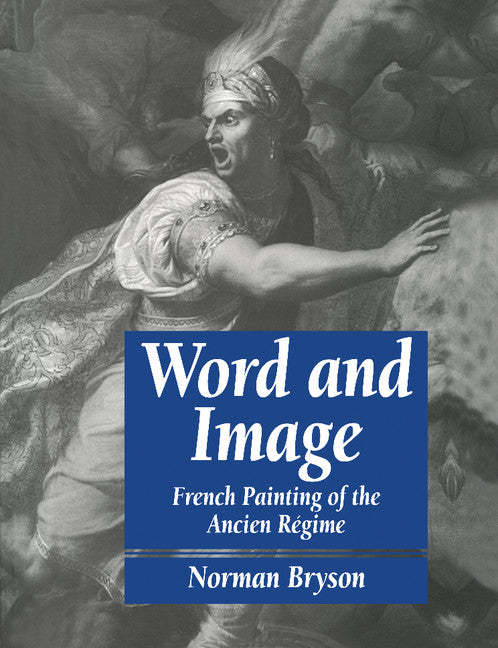Freshly Printed - allow 6 days lead
Couldn't load pickup availability
Word and Image
French Painting of the Ancien Régime
A classic work from 1982 which changed the face of art criticism in the twentieth century.
Norman Bryson (Author)
9780521276542, Cambridge University Press
Paperback, published 28 January 1983
300 pages
24.7 x 17.5 x 1.9 cm, 0.76 kg
'Word and Image repays the effort it demands in heaped measure, because Norman Bryson writes with rare intellectual exhilaration. On page after page, he detonates fresh ideas carrying far wider repercussions than his immediate subject matter. He himself has a way of turning pedagogy into pyrotechnics, just as the painters whom he discusses here with such commitment - LeBrun, Watteau, Greuze, Chardin, David - transform moral enigmas into paint.' Marina Warner, The Sunday Times
This 1982 book, now recognised as a classic, has done perhaps more than any other single work to change the face of art criticism in the twentieth century. Whereas previous books on French painting looked only at the history of painting as an evolution of artistic styles (baroque, rococo, neo-classical, and so on), Norman Bryson examines the evolution of narrative styles: the kinds of stories paintings tell, the ways they communicate their information, the different techniques of presenting the body as an instrument for incorporating textual messages. The procedure is applied to a number of painters: LeBrun, Watteau, Greuze, David and others, and the author demonstrates that the relation of formal and 'literary' elements was regarded by painters and critics in the eighteenth century as the primary issue to be confronted in the production of a painting.
List of illustrations
Preface
Acknowledgements
1. Discourse, figure
2. The legible body: LeBrun
3. Watteau and reverie
4. Transformations in rococo space
5. Greuze and the pursuit of happiness
6. Diderot and the word
7. Diderot and the image
8. 1785
Conclusion: style or sign?
Notes
List of societies affiliated to CINOA
Select bibliography
Index.
Subject Areas: History of art & design styles: c 1600 to c 1800 [ACQ]


